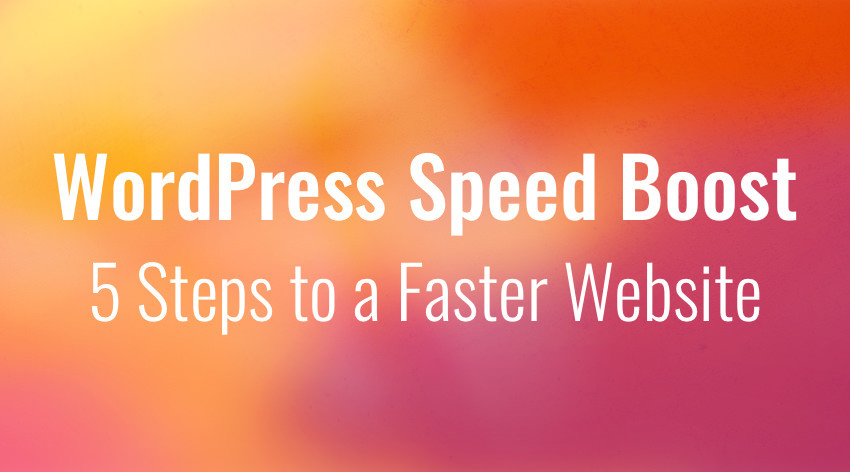Blogging Advice 3
WordPress Speed Boost: 5 Steps to a Faster Website
Website speed is arguably the most important factor of user experience and as such represents one thing webmasters should never compromise on. This is especially important for eCommerce sites, whose overall performance heavily depends on how quickly visitors can navigate through its pages.
In relation to eCommerce sites in particular, last year’s Radware report reveals that 51% of US-based online shoppers say site slowness is the top reason for abandoning a purchase. Furthermore, only a 2-second delay in page load time during a transaction may increase abandonment rates up to 87%.
Clearly, online users expect to see page contents loaded in 2 seconds or less and this is a requirement great websites simply must fulfill. Otherwise, a business will see decreased engagements and goal completions, which can be devastating. Even websites that do not directly sell products or services can benefit from improving their page load time, most notably in terms of SEO.
Dedicated to user experience as it is, Google takes page load time into account when determining your search positions, which is another reason to optimize it. Now, there are different ways to improve your website’s speed, especially if you use WordPress. As one of the world’s favorite CMSs, WordPress provides different features that can help you optimize your website for maximum performance in several relatively simple steps. (more…)
What Is Your Biggest Blogging Regret?
Try as we might to look past them, we all have regrets. Maybe you wish you did something differently, or even did something at all; maybe you rushed into something too soon or took too long getting your feet wet.
My biggest blogging regret is one that may be familiar to you; it certainly is echoed in the responses I got back from other bloggers on this topic. My regret is this: why didn’t I start sooner?! I blog all day for work, and I know that I could be very successful if I put the time and the effort into it, but it has just been so hard to motivate myself to do an extension of my day job during my free time.
But even greater than that, it is this: why am I not doing more?!
I have personally always struggled with an inability to give myself free time. Even as a child, I would make long lists of projects I wanted to accomplish over the summer break from school, and I would feel intense guilt for not completing them all. All things considered, I still had a productive childhood – fascinated by the internet, I created my first website at age 11, and have only retained that fascination ever since. Blogging just seems like a natural extension of that.
But I have so many goals for myself. I want to lead a healthier life, and need to take time to exercise regularly and to cook food instead of grabbing takeout day in and day out. I want to save money. I want to save for things – like a fitness wearable (I’m still deciding which), nicer cookware, a nice pair of new running shoes. I want to learn a programming language – I recently decided on Ruby and have started taking online courses. I want to keep up with my French skills. I want to help my boyfriend pursue his musical career. And on top of all those goals (and many others) I want to build this blog up to become a creative outlet, an income source (eventually!) and a place to share all of the great things I learn at my day job. It’s a hefty list of goals! (more…)
The Best Free Image Sources for Your Website (30+ Sites Inside!)
With the popularity of visually-oriented social networks like Pinterest and Instagram, it probably comes as no surprise to you that graphic content – images, photographs, and illustrations – plays an important role on the web. But how important?
Research from OkDork and Buzzsumo suggests that they’re incredibly important. They analyzed millions of articles and came to the conclusion that posts with at least one image are shared twice as often on Facebook and Twitter as posts without images. According to Jeff Bullas, articles with images get a total of 94% more views than articles without images. With stats like that, why wouldn’t you add images to your articles? It’s clear that simply including visual content on your blog can make a huge impact on visitors from social media. Plus, there are so many themes out there that thrive on powerful imagery.
So where do you find these great images? (more…)



